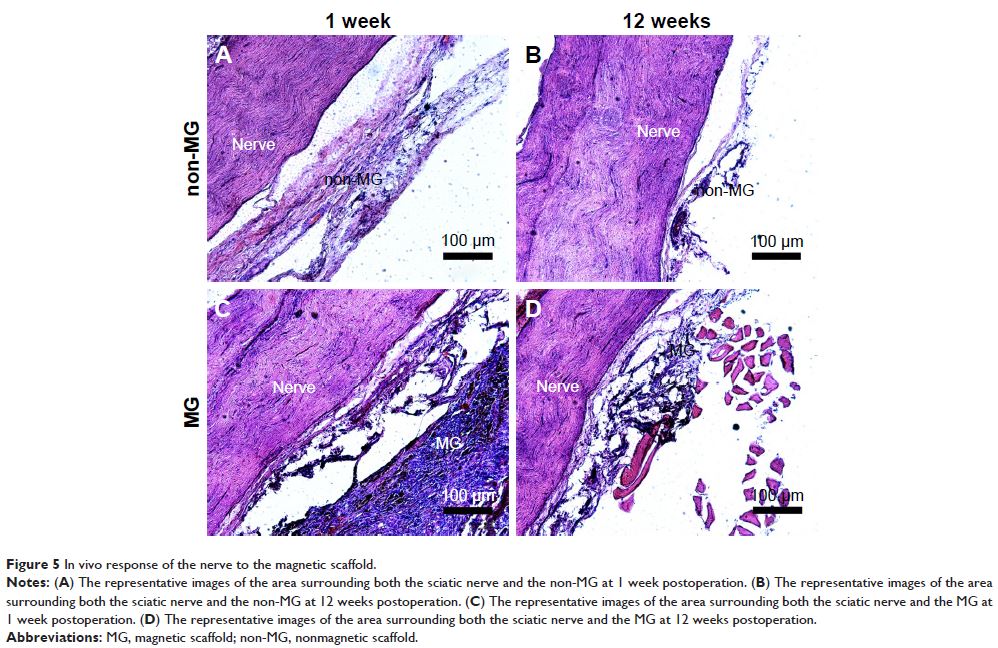9 7 8 1 6
论文已发表
注册即可获取德孚的最新动态
IF 收录期刊
- 3.3 Breast Cancer (Dove Med Press)
- 3.4 Clin Epidemiol
- 2.5 Cancer Manag Res
- 2.9 Infect Drug Resist
- 3.5 Clin Interv Aging
- 4.7 Drug Des Dev Ther
- 2.7 Int J Chronic Obstr
- 6.6 Int J Nanomed
- 2.5 Int J Women's Health
- 2.5 Neuropsych Dis Treat
- 2.7 OncoTargets Ther
- 2.0 Patient Prefer Adher
- 2.3 Ther Clin Risk Manag
- 2.5 J Pain Res
- 2.8 Diabet Metab Synd Ob
- 2.8 Psychol Res Behav Ma
- 3.0 Nat Sci Sleep
- 1.8 Pharmgenomics Pers Med
- 2.7 Risk Manag Healthc Policy
- 4.2 J Inflamm Res
- 2.1 Int J Gen Med
- 4.2 J Hepatocell Carcinoma
- 3.7 J Asthma Allergy
- 1.9 Clin Cosmet Investig Dermatol
- 2.7 J Multidiscip Healthc

磁响应纳米复合支架与施万细胞相结合,在磁场中促进坐骨神经再生
Authors Liu ZY, Zhu S, Liu L, Ge J, Huang LL, Sun Z, Zeng W, Huang JH, Luo ZJ
Received 23 June 2017
Accepted for publication 17 September 2017
Published 24 October 2017 Volume 2017:12 Pages 7815—7832
DOI https://doi.org/10.2147/IJN.S144715
Checked for plagiarism Yes
Review by Single-blind
Peer reviewers approved by Dr Govarthanan Muthusamy
Peer reviewer comments 2
Editor who approved publication: Dr Linlin Sun
Abstract: Peripheral nerve repair is still challenging for surgeons. Autologous
nerve transplantation is the acknowledged therapy; however, its application is
limited by the scarcity of available donor nerves, donor area morbidity, and
neuroma formation. Biomaterials for engineering artificial nerves, particularly
materials combined with supportive cells, display remarkable promising
prospects. Schwann cells (SCs) are the absorbing seeding cells in peripheral
nerve engineering repair; however, the attenuated biologic activity restricts
their application. In this study, a magnetic nanocomposite scaffold fabricated
from magnetic nanoparticles and a biodegradable chitosan–glycerophosphate
polymer was made. Its structure was evaluated and characterized. The combined
effects of magnetic scaffold (MG) with an applied magnetic field (MF) on the
viability of SCs and peripheral nerve injury repair were investigated. The
magnetic nanocomposite scaffold showed tunable magnetization and degradation
rate. The MGs synergized with the applied MF to enhance the viability of SCs
after transplantation. Furthermore, nerve regeneration and functional recovery
were promoted by the synergism of SCs-loaded MGs and MF. Based on the current
findings, the combined application of MGs and SCs with applied MF is a
promising therapy for the engineering of peripheral nerve regeneration.
Keywords: peripheral
nerve repair, magnetic nanoparticle, nanocomposite, magnetic field, Schwann
cell, functional recovery
